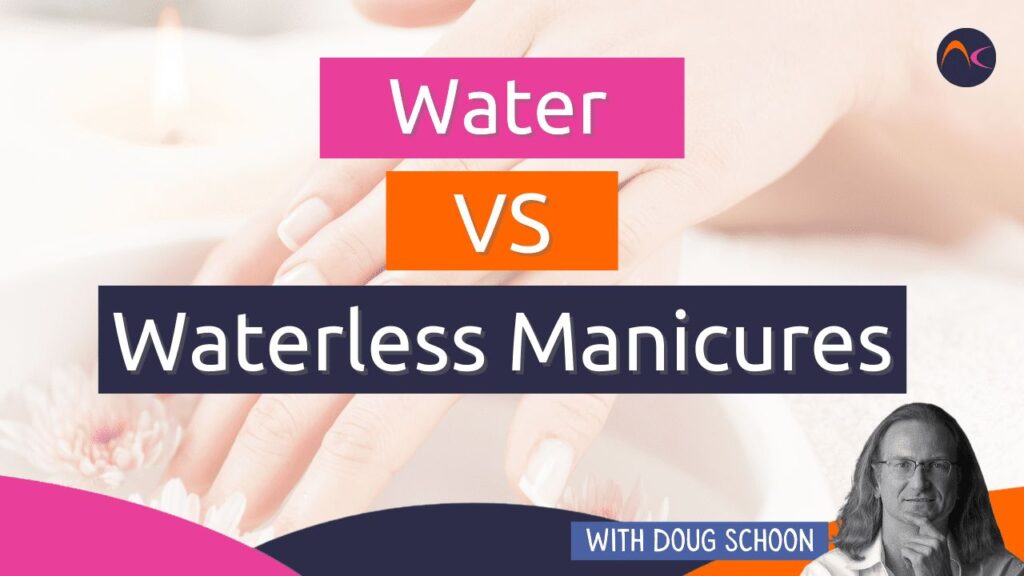When it comes to preparing nails before applying a coating, a very common debate is water vs waterless manicures. There is no shortage of opinions about this topic, but there is a shortage of facts and proper understanding.
I believe that clients should wash their hands before every service. This exposes the nails to water for about 20 seconds, if they are properly done. Twenty seconds is not a problem, and will not affect adhesion. However, this will significantly lower the risks of nail infections in the salon. In my view, not asking clients to wash their hands is risky and increases the potential for nail infections in the salon, so the hands should always be washed before every service.
What is the effect of soaking the nail plate in water? That really depends on the nail plates. Thick healthy nail plates with normally good adhesion to nail coating products will be largely unaffected when soaked in water or when a water manicure is performed. However, clients with thin, weak, or highly flexible nail plates would probably do better without a water manicure. Normally, it will take about 60 seconds for a nail plate to absorb any substantial amount of water. The longer the nail plate is soaked, the more water will be absorbed. All of this absorbed water can cause the nail plate to swell and change shape. Why? As the water molecules crowd in between the layers of the nail plate, this lubricates the layers and allows them to slide past each other while at the same time forcing the layers apart.
This results in making the nail plate more flexible and more likely to swell and change shape. The plate could curl up, flatten out or even twist… depending on its original shape. This happens because the water content of the nail can double, becoming 25-30%. Then when the nail plate returns to its normal moisture content of about 15-18%, the nail plate will then revert back to its normal shape.
Nail coatings applied to a swollen nail plate can’t be expected to adhere well to a moving surface that’s changing shape. As the nail plate dries, the nail coating will be stretched as the nail plate goes through its shape-shifting. When the nail plate reverts back to its normal shape, this can put stress on the nail coating and cause it to lose adhesion to the natural nail and may result in chipping, peeling, or cracking. There is no black and white answer since much of this depends on the client’s nails. Thinner or more flexible nail plates will be much more affected than thicker nail plates which aren’t as flexible.
This is always why it is so important for nail professionals to understand this type of information. Otherwise, they become a victim of “she said/he said”. This is often just a war of uninformed opinions. It’s better to make decisions based on the facts.






